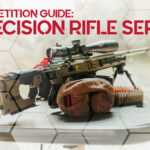
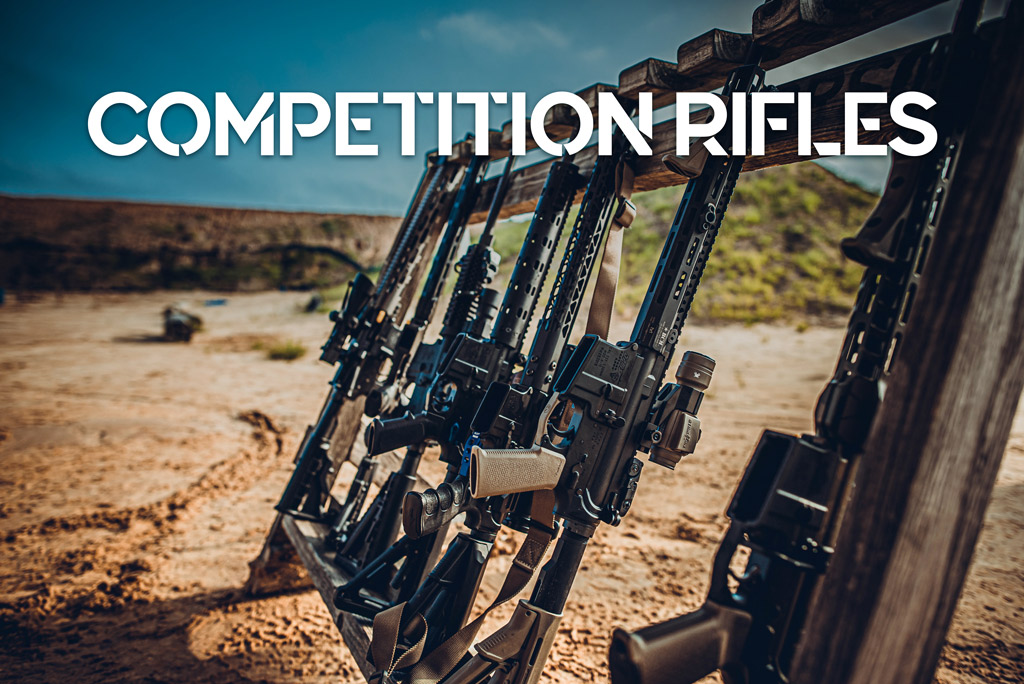
Guest Writer: Kenzie Fitzpatrick
Choosing a competition rifle is a great opportunity to figure out what competitive style you enjoy shooting. You can build a completely custom rifle or upgrade an existing stock rifle. It all starts with choosing the competition that you want to participate in. There are a variety of rifle shooting sports to engage in, from shooting Steel Challenge in the rimfire rifle divisions to shooting the precision rifle series. Plan to try as many competitions as possible, and customize the gun in a way that best fits your needs.
As always in the shooting sports industry, borrowing and trying a variety of guns and gear is a great start before committing and investing in your own. Here are a few options to start thinking about:
Rifle Competitions
Precision Rifle Series (PRS)
The Precision Rifle Series (PRS) is a rifle shooting competition that focuses on long-range precision rifle shooting. PRS is a game of accuracy that comes down to understanding your scope and wind holds while getting into difficult shooting positions that challenge your ability to minimize your movement quickly for the most accurate shot.
You’ll enjoy PRS shooting if you enjoy understanding ballistic data. Part of the fun is handloading your ammunition to your rifle, dialing your scope and holding to make your shots, and learning different shooting positions to build a stable platform in the most awkward of situations.
A PRS rifle can range in price from $2,000 to upwards of $8,000. You’ll find that the scope is equally as important as the rifle itself. PRS rifles are much heavier than sporting rifles you may be used to. The goal of PRS rifles is to be as flat shooting and stable as possible to minimize movement.
3 Gun Rifle Competition
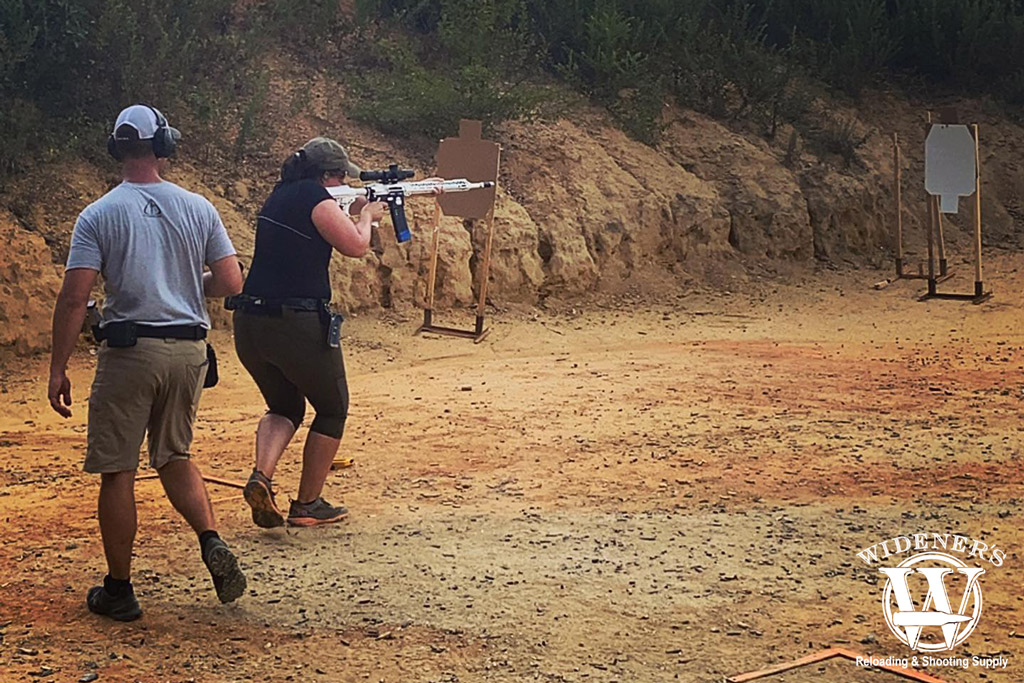
3 Gun competitions require you to have a rifle that can perform at close and far target distances.
If you’re entering the sport of 3 gun, you’ll need a rifle that can take some wear and tear. 3 gun rifles are not meant to be safe queens or babied. These rifles are constantly dumped into barrels, rained on, shot in dusty, muddy, and all sorts of weather conditions. At the end of the day they are still expected to hold zero.
Despite the running and gunning style of shooting that 3 gun is all about, most all major 3 gun matches will push your distance shooting out to 600 yards. This means your rifle barrel should have enough twist and length to handle shooting at a distance. The most common barrel length in 3 gun is 16 inches. A muzzle break is typically added to reduce felt recoil. I shoot an 18-inch Wylde Ballistic Advantage barrel because I wanted more distance, but didn’t want the added weight.
While there is a heavy division where you can shoot .308, most competitors shoot a 5.56 or .223 barrel. One of my recommendations is either choosing a 5.56 or .223 Wylde barrel so that you can shoot both 5.56 and .223 Widener’s ammunition through it.
Optics & Scopes
While most all competitors shoot in divisions with scopes on their rifles, there is a Limited division of using a red dot (or you can shoot irons if you’re one of those rare birds). A solid 3 gun rifle can cost you anywhere from $800 to upwards of $1500. If you choose to run a scope, the most common and easy to use in 3 gun are 1-6 or 1-8 magnified scopes. Make sure to invest in a solid scope mount to keep your gun zeroed in even the heaviest of conditions.
Steel Challenge Rifle

Steel Challenge requires speed, accuracy, and fast transitions from one target to the next.
A Steel Challenge match is just that, a much bigger challenge than it appears. A Steel Challenge match is all about speed and learning quick movement from one target to the next. Before choosing a rifle for competition, let’s talk about the two divisions within Steel Challenge. The Rimfire Rifle Division is .22 Long Rifle (LR) only and includes RFRO (allows an optic to be mounted) or RFRI (iron sights only). There are no other restrictions on the gun when it comes to compensators, weight, etc.
These guns are built for speed and need to run with no function failures. Rimfire guns are most commonly known for getting dirty easily and failing to fire due to an unclean firearm. Be sure to always clean your .22 LR rifle after shooting it.
These rifles can range in price from $200 to upwards of $600. Depending on if you plan to shoot iron sights or a red dot, aftermarket sights should be considered so you can set the gun up to you. Similar to any other firearm, finding the right kind of .22 LR ammunition it likes to shoot is important. Spend time before a match test firing different manufacturers to find what runs consistently.
Close-Quarters Combat (CQB) Rifle
CQB, outlaw, and low light rifle matches are a ton of fun to shoot. I highly recommend signing up for one if you can and enjoying yourself. A short-barreled rifle (SBR) is a perfect rifle for any of these bay type, quick shooting and maneuvering style matches.
Even if you don’t have an SBR, the rifle setup should be lightweight and easy to maneuver. I also highly recommend using a red dot (or iron sights) set up instead of a scope in these matches. A scope will actually slow you down and is not the right sight system to be used in close-quarters.
There are other types of competitions that use rifles and even if they’re not listed here, there are some common features in finding and customizing a rifle to you for competition.
Choosing a Rifle for Competition:
Try Before You Buy
Selecting a rifle for competition is easier said than done. That being said, you don’t need to just go out and buy something. The best advice I can give you is to talk to other competitors to find out what works for them.
When I got started in competition shooting, and even in some cases today, I borrowed guns when I needed to. The shooting community is full of givers and people who want others out shooting and having a good time.
The first step in choosing a rifle for competition is attending the type of competition you want to shoot. Watch and learn how it’s operated. Ask questions of all levels of shooters to find out why their rifle is set up the way it is. Don’t just get one perspective.
At bigger matches, sponsors will come out with demo guns where you can walk up and try shooting a variety of their guns. These are the folks to ask questions of. Ask them anything from ballistic information to barrel twist, to ammunition loads, and more.
Customizing What Matters
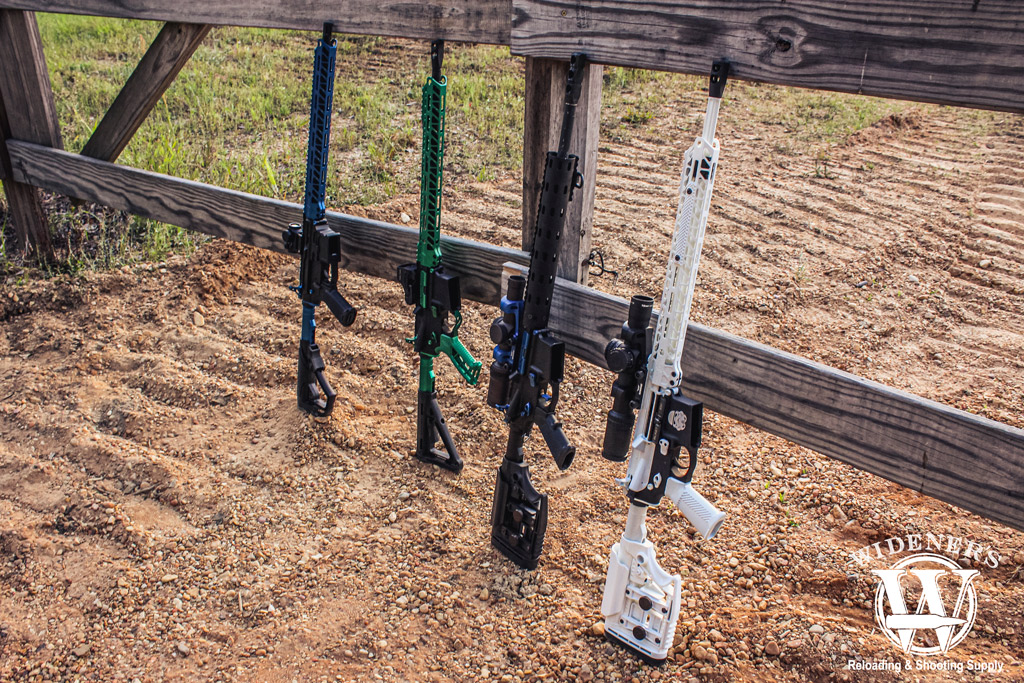
Consider what shooting competitions you plan to use the rifle in before customizing it.
In a previous blog article, I talked about Must Have AR-15 Accessories. While this blog is tailored only to the AR-15 models, find out what needs to be customized to you in the other rifle competitions by doing research and asking current competitors.
Steel Challenge rifles, for example, should have fast resetting triggers, a comfortable grip, and a long enough stock to allow you to swing the rifle in the arcs that Steel Challenge requires you to shoot in. On a PRS rifle, you need to be able to easily move the bolt if shooting a bolt action rifle.
If you can’t reach the bolt or move it quickly, consider changing that component. On a CQB rifle, if using an SBR, a hand stop is probably one of the most important components so you don’t put your hand past the muzzle.
Weight Considerations
Unfortunately, in a sport like PRS, you’ll have to learn how to manage a heavy rifle. If the weight is unbearable and you can’t get into different positions with it, you need to lighten the rifle or find a different one to use. In Steel Challenge, you have to be able to hold the rifle up long enough and move it to impact the various targets quickly.
In 3 gun, you may have the rifle slung across your back or find yourself shooting offhand at a plate rack 50 yards away. If you can’t hold your rifle up long enough to fire it when you need to, either you’ll need to do weight training or find a better rifle that works for you.
Recoil Management
Recoil management is something you’ll have to learn how to manage, especially in an all rifle shooting discipline. Fortunately, there are ways to combat felt recoil. One of the best upgrades to choosing a rifle for competition is choosing a muzzle brake that can divert the gas to lighten the felt recoil you have when shooting. I will forever be a fan of the RAGE by UM Tactical and they make one for .223/5.56, 30 cal, 9mm, and AK 47.
The other component I changed to manage felt recoil is using an adjustable gas block on my rifle. This allows you to tune the rifle for a softer shot. This adjustment, with the right ammunition, can play a big part in how much a rifle recoils.
Competition Ammunition
Ammunition cost and availability are important considerations when choosing a rifle for competition. Choosing the caliber you can afford to buy practice and competition ammunition for is also something to budget for. Practice ammunition and competition ammunition have differences such as different bullet grain weight, velocity, and many other specifications.
My go-to practice ammo is a standard brass-cased .223 55gr FMJ round. I also use this ammo when I’m shooting close-range paper targets during competitions. Why? Easy, it’s a cheap, reliable option. When it comes to shooting accurately at a distance, a heavier bullet will have more stability. You may also need the extra weight to spin, or knock down a heavy target. For shooting targets at a distance, I use a 75gr, or a 77gr hollow-point boat-tail bullet.
If the gun you choose is something you have to custom-load ammunition for, factor in a budget for reloading supplies. Be aware custom reloading can have a high-cost upfront. However, it becomes a lower cost over time when you’re reloading your own ammunition.
Building Your Competition Rifle
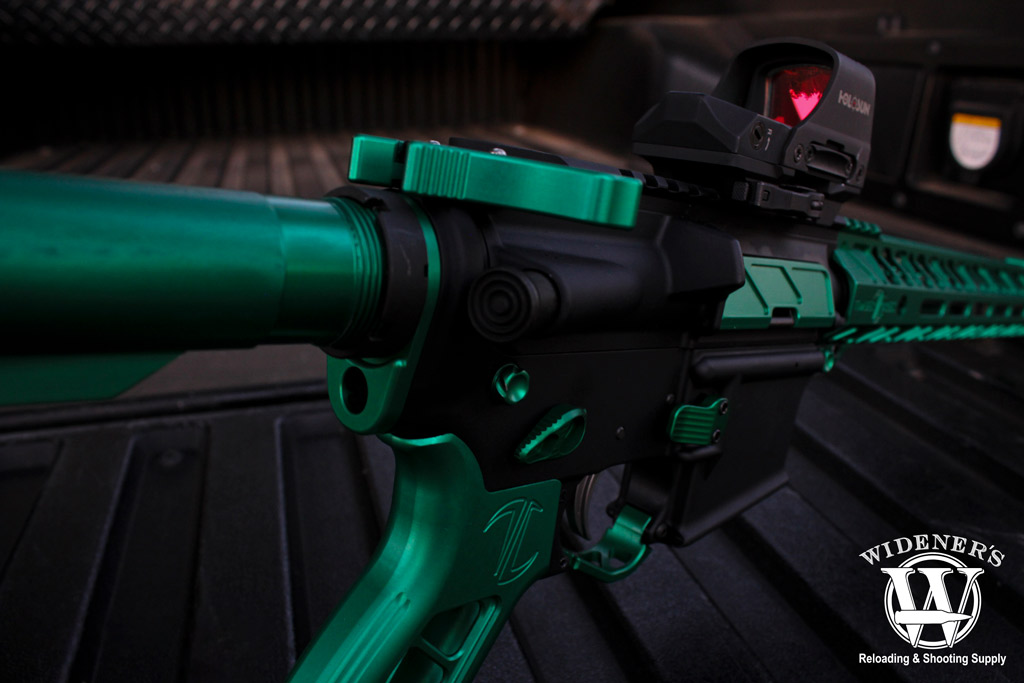
You don’t have to build your dream gun right away, find out what works best for you before you invest. (Select Photography by Betsy Holt)
If you want to get into the shooting sports, don’t let building a rifle slow you down. Most shooters I know started with a stock rifle. They customized a few pieces at a time, and then ended up building a custom rifle when they were ready. Finding out what you like and what’s useful is something that comes with practice.
Accordingly, you need to experience shooting enough competitions to know what you need and don’t need. Don’t forget to ask the competition community you want to join. Shooters can be the most helpful resource on what they’ve learned from their time competing.


